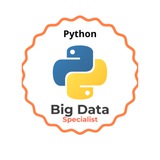🚀 Introduction to Programming with Python
🔹 Software = Instructions for hardware
🔹 Programming = Writing instructions to create software
🔹 Code = The instructions written to build software
🔹 Syntax = The grammar of a programming language
💡 Why Python? Python is beginner-friendly, powerful, and requires minimal code compared to other languages. Example: Printing "Hello World" is simpler in Python than in Java!
⚡ Compiler vs. Interpreter
🔹 Compiler (C, C++) → Translates entire code at once → Faster execution
🔹 Interpreter (Python, Java) → Executes code line by line → Easier debugging
🖥 Key Concepts
✅ Source Code = Human-readable instructions
✅ Processor = The brain of a computer
✅ Bytecode = Intermediate code generated after compilation
🔍 Pros & Cons
✔️ Compilers = Faster execution, better security, debugging tools
❌ Compilers = Slower compilation, catches only syntax/semantic errors
✔️ Interpreters = Easy debugging, efficient memory usage
❌ Interpreters = Slower execution
🔹 Software = Instructions for hardware
🔹 Programming = Writing instructions to create software
🔹 Code = The instructions written to build software
🔹 Syntax = The grammar of a programming language
💡 Why Python? Python is beginner-friendly, powerful, and requires minimal code compared to other languages. Example: Printing "Hello World" is simpler in Python than in Java!
⚡ Compiler vs. Interpreter
🔹 Compiler (C, C++) → Translates entire code at once → Faster execution
🔹 Interpreter (Python, Java) → Executes code line by line → Easier debugging
🖥 Key Concepts
✅ Source Code = Human-readable instructions
✅ Processor = The brain of a computer
✅ Bytecode = Intermediate code generated after compilation
🔍 Pros & Cons
✔️ Compilers = Faster execution, better security, debugging tools
❌ Compilers = Slower compilation, catches only syntax/semantic errors
✔️ Interpreters = Easy debugging, efficient memory usage
❌ Interpreters = Slower execution
👍2❤1
